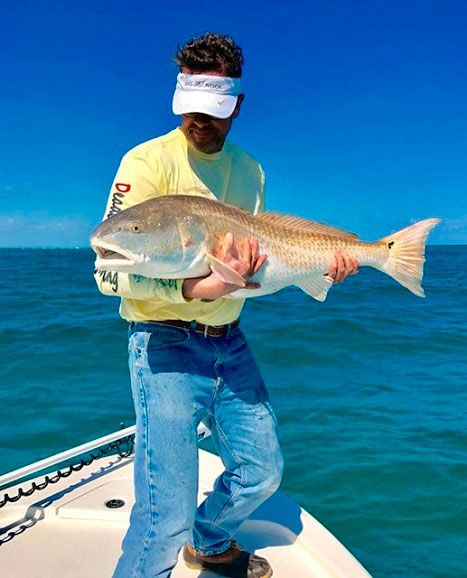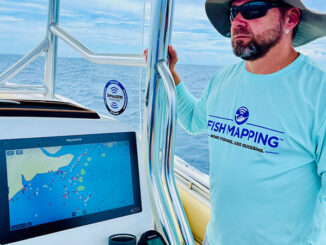
It’s old drum time
Most North Carolina inshore anglers think of May as a month to chase spotted seatrout, bluefish, cobia, kings and Spanish mackerel. But another species require some looking. And a little bravery can provide rod-bending action.
Locals call them “old” drum, but they’re actually female red drum that vary from 20 to 60 pounds.
Because air temperatures warm Atlantic Ocean waters by May (and with the help of regulations), N.C. redfish numbers have exploded.
Bryan Goodwin, an 8th-generation Beaufort native who owns and operates Native Guide Service (252-725-3961) and produces the Downeast Outdoor Television show, watches for baitfish at Cape Lookout’s shoals near Beaufort Inlet and nearby beaches.
The shoals stretch seaward 19 miles from the north corner of the inlet to the Knuckle Buoy (where it’s safe to U-turn a boat and head toward land).
Depending on wind and ocean tides, large menhaden schools cross through small shoal cuts or swim along the shoal’s sides. When the tide flows out, baitfish get plastered against its sides, providing a smorgasbord for drum.
Tough conditions, but big rewards
“But it’s challenging, difficult fishing. And you only can fish a few (good weather) days at the shoals. Few people fish the Cape Lookout shoals because weather, wind and waves can create dicey conditions for boat anglers,” said Goodwin.
“Shad and old drum head toward the shoreline when the water temperature changes,” he said. “They migrate about the same time every year.”
Adult redfish leave offshore structures each spring and follow menhaden schools. They spread out along the beaches or swim through Beaufort Inlet for inside waters.
“I look for menhaden on the surface or with side-scan sonar for reds,” he said.
He likes reels mated to 6-foot rods with 20- to 30-pound-test braid line and 3- to 4-feet of fluorocarbon leaders.
“I lighten up my tackle a bit. But it’s basically the same tackle I use for cobia,” Goodwin said.
When the water is dingy, his tackle includes 20- to 40-pound test main line and 2- to 3-ounce bucktails. He adds curlytail soft-plastic trailers to his bucktails.
“Sometimes at the shoals you’ll catch a cobia on the bucktails when you’re fishing for red drum,” Goodwin said.
Another favorite tactic of anglers who eschew artificial lures is to soak crabs on the bottom.




Be the first to comment